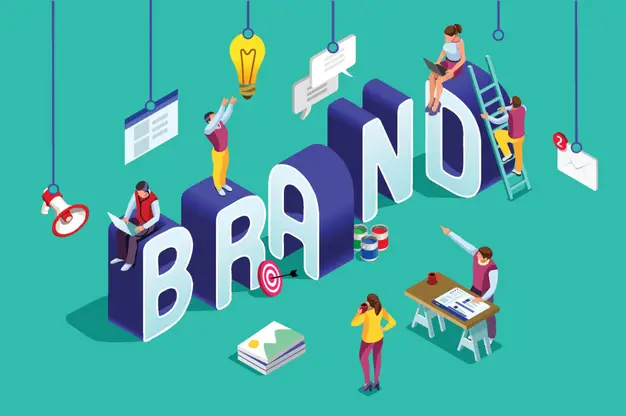B2B marketing is chock full of buzzwords, acronyms, and jargon – you could be forgiven for thinking it’s confusing!
As Peter Drucker once wrote, “the purpose of business is to create a customer.” Therefore, the business enterprise has two – and only two – basic functions: marketing and innovation. With that in mind, I wanted to bring some clarity to the B2B picture. Think of this as a cheat sheet on which B2B marketing terms really matter (or don’t!), and why, for 2024. Without further ado…
Inbound Marketing vs. Outbound Marketing
Outbound (or traditional) marketing is where brands try to push their messages out. Hubspot defines inbound marketing as attracting potential customers ‘in’ with useful information. Let’s ask ourselves… how do those customers being attracted ‘in’ hear about us in the first place?
In my opinion, outbound marketing is the only way to spread awareness and get the word ‘out’ about your inbound marketing efforts. This is all we talked about 10-15 years ago, but today I would say inbound vs. outbound marketing is an outdated concept.
2024 prediction: This concept will continue to collect dust.
Brand Advertising
Or, as I see it, the Holy Grail! Brand advertising is supposed to create positive recognition by establishing brand identity, credibility, and loyalty, connecting intellectually and emotionally with potential buyers. Quantcast claims brand advertising is primarily a strategy used to increase market share – getting people to believe in something, to attract and maintain customers. But it’s also more than this. Like my marketing heroes, Les Binet and Peter Field, argue: You must build a connection between brand and customer to create brand loyalty.
Branding usually works on an emotional level, creating long-term memories and associations that influence purchasing decisions long after advertising runs. This is bigger than sales activation, requiring much broader reach and repeat exposure. But it’s ultimately more effective, because the effects accumulate over time, last longer, reduce price sensitivity, and increase margins. As a result, it is the main driver of long-term growth and profit.
Jenni Romaniuk and Byron Sharp write in How Brands Grow that brand advertising is all about creating mental availability, to increase the chance that your brand comes to mind in different buying situations – basically, the brand that gets remembered more is the brand that gets bought more. This may sound like a B2C volume play, but it’s just as relevant in B2B. The only difference is that in B2C, the step between remembering and buying tends to be short. In B2B, remembering triggers education and research. Which, of course, is where our content creation and other activities have to come in.
2024 prediction: The conversation around building brand in B2B will remain at the forefront throughout the year. I think we’ll continue to see budgets shift, but not from the current 30% spent on brand to the recommended 46%. My prediction is we’ll land closer to 35% by the end of the year.
Demand Generation
Wikipedia defines demand generation as “the focus of targeted marketing programs to drive awareness and interest in a company’s products or services.” Multiple areas of marketing, sure, but it’s really just the marriage of marketing programs and a structured sales process.
The components of a stepped demand generation process vary based on the size and complexity of a sale: methodologies like AIDA (attract Attention, maintain Interest, create Desire, get Action).
Essentially, demand generation is a long-term, education-focused marketing strategy that prioritizes reaching and engaging out-of-market buyers – staying top of mind even while they are not in a buying cycle so you remain there when the time is right.
This is where things get murky. I believe the umbrella of marketing programs should always be grounded in brand thinking and advertising. Brand is the consistency and the growth catalyst; brand advertising is what gets people there. Demand gen, on the other hand, seems to have become synonymous with marketing in general for many people. Take Adobe’s definition: demand generation is “an umbrella term for a range of activities that drive long-term engagement – including lead generation, demand capture, and pipeline acceleration.” Replacing the phrase “demand generation” with “marketing” actually clarifies what they mean a bit.
2024 prediction: I think this will more or less hold as the status quo.
Lead Generation
Lead Generation – defined by our friends at Wikipedia as “the initiation of consumer interest or inquiry into the products or services of a business” – has positioned marketing as an exact science, where data helps eliminate waste and all outcomes can be tied to a dollar outcome.
HubSpot thinks of lead generation in 4 steps: 1. A visitor discovers your company through one of your marketing channels; 2. The visitor clicks on a CTA; 3. The CTA takes them to a landing page with some sort of offer in exchange for them sharing their information; and 4. Once on the landing page, the visitor fills in their information. Presto… a lead!
Decision makers love when things feel more certain – it’s why we’ve seen budgets shift from brand advertising to lead generation activities. But this is a real waste. We know, for example, that only 5% of the so-called category buyers (think buying computers or new cars, or switching banks) are actually going to buy anything now… and even category buyers don’t buy these things all the time. The problem with the lead generation myth (yes, I think it’s a myth!) is it leads marketers to believe it’s advertising’s job to move people “in-market.” But ads don’t move buyers in-market – buyers move themselves in-market, when they need a new good or service.

I would even argue that marketing technology and marketing automation has perhaps rendered lead gen useless. If we have a new client at Sköna and I spend some time on their website trying to understand what they do, I will almost always get an email from one of their SDRs within a few hours, requesting a meeting to discuss how they can solve my problems.
2024 prediction: I believe things are going to swing up in tech in H1 2024. Even though marketers want to spend more on brand, we won’t be able to change the minds of boards and CEOs who like the easy science of Lead Gen. In other words, lead gen will eat more of the marketing pie.
ABM
Account Based Marketing is a strategy where sales and marketing collaborate and focus their efforts on specific organizations or accounts. ABM focuses on creating content geared towards specific prospects at specific organizations. According to Adobe, this is especially effective if your business serves enterprise customers, because ABM allows you to target multiple decision-makers.
To be frank, this is no different to me than what we marketers used to do 15-20 years ago – there’s just a fancier name attached. Marketers always used to buy lists of target companies, and several different titles were always on that list. Together with sales, we would prioritize who we were going after. One of the cornerstones of modern ABM is that sales and marketing have to be aligned in order for it to work, but if we think back to the turn of the century (1999!), the common title was not CMO or CRO… we usually saw the VP of Sales and Marketing.
2024 prediction: When things were slow, many marketing departments focused on getting their ducks in a row – including ICP and persona analysis. In 2024, I believe marketing departments will work closer than ever with sales in order to execute on ABM strategies. My prediction: hockey stick growth of ABM budgets!
Performance Marketing
I think of performance marketing interchangeably with lead generation, but that’s not technically correct. In fact, most marketers group terms like demand generation, lead generation, ABM, and digital marketing into performance marketing. But performance marketing is actually defined as advertising programs in which affiliates and marketing companies are only paid when a desired action is completed. Simplilearn explains it as when advertisers connect with either agencies or publishers to design and place advertisements for their company on any number of performance marketing channels (social media, search engines, videos, embedded web content, and more). Advertisers pay for how well their ads perform – you usually see KPIs such as CPC, CPL, or CPA.
This makes performance marketing much more relevant for B2C. When you’re selling a consumer product with a low per unit cost, expecting and getting compensated for an actual purchase makes sense. The B2B sales cycle is longer, per unit cost is higher, purchasing decisions are usually made by a committee, and so forth… so it’s not as applicable.
2024 prediction: Performance marketing will be an irrelevant concept for B2B.
Content Marketing
According to the Content Marketing Institute, content marketing is a strategic approach focused on creating and distributing valuable, relevant, and consistent content to attract and retain a clearly-defined audience – and, ultimately, to drive profitable customer action. Instead of pitching products or services, content marketing provides relevant, useful content to your prospects and customers to help them solve issues in their work.
In theory, by educating potential customers, you cement your status as both a leader in the space and a solutions provider for their problems. How is this any different than thought leadership?
Entrepreneur Magazine argues that thought leadership and content marketing are actually worlds apart. Content marketing is a top-down approach – a commodity, a flood of content – while thought leadership is peer-to-peer, and more about the quality of thinking. One observation that stood out is that content marketing is usually published on your own site (typically in your blog or resources page), while thought-leadership is published in other places, such as third-party magazines or industry publications.
2024 prediction: During the cold economic winter, marketing departments built up a library of content that they’re now ready to release to the world. Plus, many execs think content marketing is cheap, so I think we’ll see a continued focus in 2024 budgets.
Lifecycle Marketing
I’ve recently seen more focus on the term ‘lifecycle marketing’, which includes all the stages in order to attract and sign customers: awareness, engagement, evaluation, and purchase, plus the support and loyalty phases.
Lifecycle marketing has always been important to expensive purchases and brands, like Mercedes, but less pricey brands also do this well. Take Nespresso: for them, it’s a volume conversation – you almost have to think about your next purchase the minute you carry your first batch of cups home.
This has become more important in B2B with the recent economic downturn, especially in SaaS. Many tech companies are focused on customer retention to combat high, financially motivated churn rates – the idea being that it’s cheaper to retain existing customers versus building from scratch. Marketers have thus shifted their focus to lifecycle marketing and the entire customer lifecycle (including customer success and customer marketing).
2024 prediction: Things are loosening up, but we’re not back to the 2021 party. B2B brands will continue to increase spend on existing customers and focus on preventing churn. Lifecycle marketing will be a 2024 winner in the B2B world.
Why does it all matter?
This whole investigation started after I read a report from Linkedin that claimed B2B marketing budgets were coming back (phew!) and brand awareness activities were becoming a competitive part of the pie – 36% of spend is going to lead generation and 30% to brand awareness. The problem? An additional 20% of the equation is going to demand generation activities, and another 15% to ABM. Group all these together and we actually have about 70% of marketing budgets spent on lead generation and 30% on brand – the wrong distribution for lasting results.
Remember how we talked under Lead Generation about only 5% of your TAM being in a place to buy this very moment? This is because in general, 95% of potential buyers have previous engagements that stop a purchase now (think unbreakable contracts, etc). In other words, if you put 70% of your total budget towards driving people in your funnel down (making them buy sooner), you’re effectively spending 70% of your budget on 5% of your audience.
So, if you take only one thing away from this article for 2024 and beyond, remember Les Binet and Peter Field’s wise words: put more (say, 46%) of your B2B advertising budget towards brand building and memory-creating, and closer to 54% towards lead-generating activities that help nurture and drive people down the funnel.





